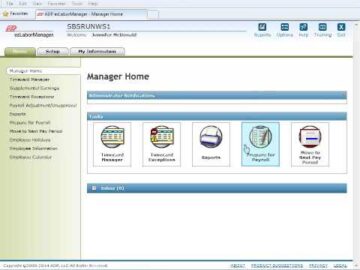
Though the bank may underwrite based on the gross profit of primary product lines, banks are most interested in seeing net cash flow after all expenses (especially interest). Your CTC comprises basic pay, variable pay, allowances, and perquisites. This is the net taxable salary and income tax is calculated on this net taxable salary.
NVIDIA Announces Financial Results for Third Quarter Fiscal 2024 – NVIDIA Blog
NVIDIA Announces Financial Results for Third Quarter Fiscal 2024.
Posted: Tue, 21 Nov 2023 21:24:25 GMT [source]
Gross income includes all of your income before any deductions are taken. For example, if you are working in a job in which you’re paid an hourly wage, your gross income is the hourly rate you’re paid multiplied by the number of hours you’ve worked during a pay period. Net income measures profitability, deducting total expenses from gross income to show how much profit a business made in a given period of time. While your gross income is higher than your net income, you should understand how both affect your taxes and budget.
What is Net Income: How to Calculate and Use It for Your Business
It makes sense to withhold the maximum amount you can contribute to tax-advantaged retirement accounts, as this both lowers your taxes and helps you build a nest egg for your retirement. It is the monetary gain that the firm gets over a period of time, from operating activity, measured after deducting all expenses and expired costs incurred during the period. In this, the non-operational income is also included in it, such as rental income, profit from the sale of assets. To a business, net income or net profit is the amount of revenues that exceed the total costs of producing those revenues. In other words, the formula equals total revenues minus total expenses. This measures the amount of profits that remain in the business after all expenses have been paid for the period.
Your net income, on the other hand, is what you have left after you subtract all of your eligible business expenses and estimated tax payments from your gross income. This is what the IRS will use to determine your tax liability for the year. Your adjusted gross income (AGI) is a number that the IRS uses to help calculate your taxable income as well as determine whether you qualify for certain tax deductions and credits. On the other hand, a business’s net income, also referred to as net profit, is normally the amount of money left over after accounting for operating expenses a company incurs.
How Do I Calculate Net Income From Gross?
These deductions can significantly reduce the amount of income that Uncle Sam ultimately taxes, thus lowering your overall tax liability. While gross income is the sum of all of the money you earn what is the difference between gross and net income or receive in a year, you won’t necessarily pay taxes on all of it. Taxable income is the portion of your gross income that the government deems subject to taxes at both federal and state levels.

Whether you’re a seasoned entrepreneur or just getting started, understanding net income through tangible scenarios can be a game-changer for your financial planning and decision-making processes. It’s not to be confused with other terms such as ‘gross profit’ or ‘operating income’, which we’ll delve into later. Below-the-line deductions, such as charitable donations or medical expenses, can be subtracted from your AGI after it has already been calculated. Now that we know the definitions of net vs gross income, we can compare the two.
How gross and net income can impact your budget
Gross means the total or whole amount of something, whereas net means what remains from the whole after certain deductions are made. Your gross income is all of the payments you receive from clients or customers for the year before expenses. If you’re a freelancer or independent contractor, clients typically don’t withhold taxes from payments made to your business. If it turns out that you paid more than you needed to, either through withholdings from your paycheck or estimated tax payments, you have two options.
For example, say a manufacturing plant produced 5,000 automobiles in one quarter, and the company paid $15,000 in rent for the building. Under absorption costing, $3 in costs would be assigned to each automobile produced. The net income (“Net profit or loss”) is used to calculate the business owner’s tax liability for the business. The amount of the basic exemption limit is not taxable under the Income Tax Act, 1961. When starting a salaried job, you will need to complete a Form W-4, known as the Employee’s Withholding Certificate. This form helps employers determine how much to withhold for your taxes.
Understanding Net Income Formula
To calculate your personal or business net income, sometimes also referred to as net profit, you will subtract your expenses from your total revenue for the year. For individuals, net income allows you to see how much you take home after you factor in taxes and deductions. In business, net income evaluates the company’s actual revenue by factoring in all costs. Federal, state, and local taxes are often assessed after all expenses have been considered. Though certain tax credits or deductions may closely relate to gross profit, government entities are more interested in a company’s net income when assessing tax.





Comentários